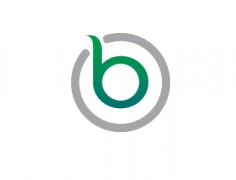“I felt a bit like Frankenstein, getting zapped with electricity while sharp things were sticking into me,” a friend told me with a laugh. “Yet it did make me feel like I was getting a new life, because after the electroacupuncture, my arthritis pain really was reduced.”
It may seem strange to combine an ancient healing practice with modern technology, but that is basically what electroacupuncture does in sending a small electric current into acupuncture needles. I called Stacy Drinkut Smith, LAc, a licensed acupuncturist who uses electroacupuncture in her practice in Santa Barbara, California, to discuss the technique. She explained that it is similar to traditional acupuncture in that the same points and meridians (energy channels) are stimulated, but adding electrical current makes the needle stimulation stronger and steadier.
Does electroacupuncture work better than manual acupuncture? It can, according to a study that directly compared the two techniques in patients with tennis elbow and found superior pain relief and grip strength in the electroacupuncture group. Experts don’t agree on whether electroacupuncture helps with all the same conditions as regular acupuncture, but a surprising amount of up-to-the-minute research does support the effectiveness of the technique. Recent studies show that electroacupuncture can help…
Relieve arthritis. Patients with hip osteoarthritis had electroacupuncture or took a prescription pain reliever/anti-inflammatory (one that is commonly prescribed but has potentially serious side effects). There was significantly more improvement in joint pain, function and range of motion among electroacupuncture recipients than among medication recipients.
Improve blood flow. With Raynaud’s disease, fingers and toes feel cold and turn white or blue as blood vessels constrict… then throb, tingle and turn red when blood flow returns. Raynaud’s patients reported significantly reduced discomfort and frequency of attacks after receiving a series of electroacupuncture sessions as compared with before their treatment.
Reduce postsurgical pain. The day before heart surgery, patients received either electroacupuncture or a sham treatment… after surgery, the electroacupuncture group reported significantly lower pain intensity and required less pain medication than the other group.
Restore damaged nerves. Patients with peripheral nerve damage and some loss of muscle function had poor prognoses… but after electroacupuncture, function improved or was recovered completely in the majority of participants.
In addition, there are studies supporting the use of electroacupuncture for treating fertility problems and hormonal imbalances. And according to Smith, electroacupuncture works very well for various types of pain… recovery from joint replacement and other surgeries… menstrual cramps and irregularities… headaches… and stress. Electroacupuncture often is preferable to traditional acupuncture when treating chronic pain and other chronic conditions that involve lots of energy stagnation in the body, Smith added. Caution: Electroacupuncture should not be used on anyone who has a pacemaker because the electrical stimulation might disrupt the function of the device. Some practitioners opt not to use electroacupuncture on patients who have a seizure disorder.
What to Expect in an Electroacupuncture Session
During a treatment session, acupuncture needles first are placed in the target meridians and/or acupuncture points, just as in traditional acupuncture. Then electricity is added by attaching small clips (imagine miniature car battery jumper cables) that connect a pair of needles to a small battery-operated generator.
With traditional acupuncture (not using electricity), the practitioner can boost stimulation at a particular acupuncture point by twirling or otherwise manipulating needles. With electroacupuncture, electricity provides the stimulation—called e-stim—and the acupuncturist controls its intensity by increasing or reducing the current.
The practitioner may use e-stim on a single pair of needles at a particular acupuncture point or on more than one pair at a time. “We can do e-stim on one side of the body and then switch to the other, but we don’t do both sides at the same time because crossing the midline would interfere with the stimulation effect, jamming the patient’s own signals,” Smith explained.
When I asked my friend what electroacupuncture felt like, she said, “My acupuncturist increases the current just to the point where I can feel mild tingling, and then he dials back a bit, so all I feel is an awareness of energy flow. If I perceive any numbness, knocking, thumping or discomfort, he dials back more.”
Typically an electroacupuncture treatment session lasts about 30 minutes. The number of sessions required depends on the condition being treated, but generally an acupuncturist recommends a course of six and then does another evaluation, Smith said. Sessions cost about $60 to $120—similar to or slightly more than traditional acupuncture. If your insurance covers regular acupuncture, it probably covers electroacupuncture, too, but check in advance just to be sure.
To find a licensed acupuncturist in your area, consult the American Association of Acupuncture and Oriental Medicine (call 866-455-7999 or visit www.aaaomOnline.org and click on Patients and Find a Practitioner). Practitioners’ AAAOM profiles may or may not specify the types of acupuncture they provide, but you can phone or check individuals’ Web sites to find out whether they practice electroacupuncture.
——————————————————————————————-
Source: Stacy Drinkut Smith, LAc, Dipl OM (diplomate in Oriental medicine), is a licensed acupuncturist and herbalist specializing in women’s health. She is the cofounder of Points of Health, a clinic in Santa Barbara, California. www.PointsOfHealth.org
